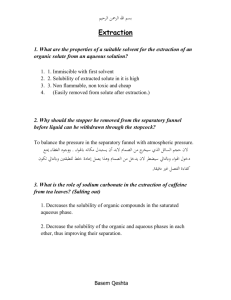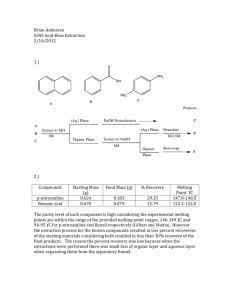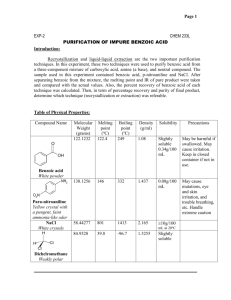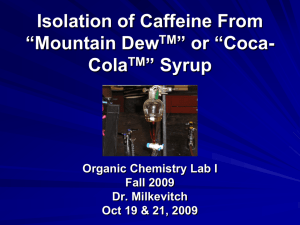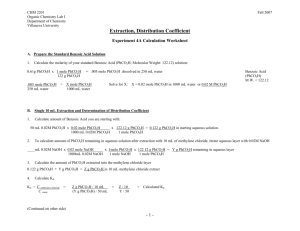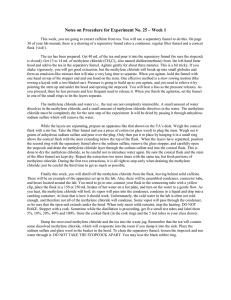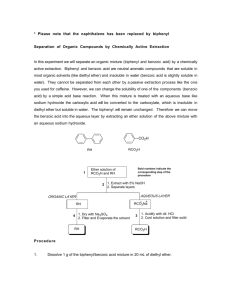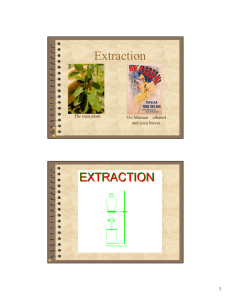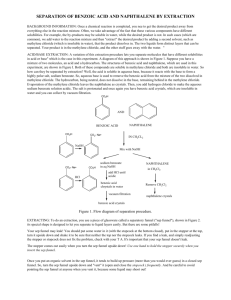WORD - Cerritos College
advertisement
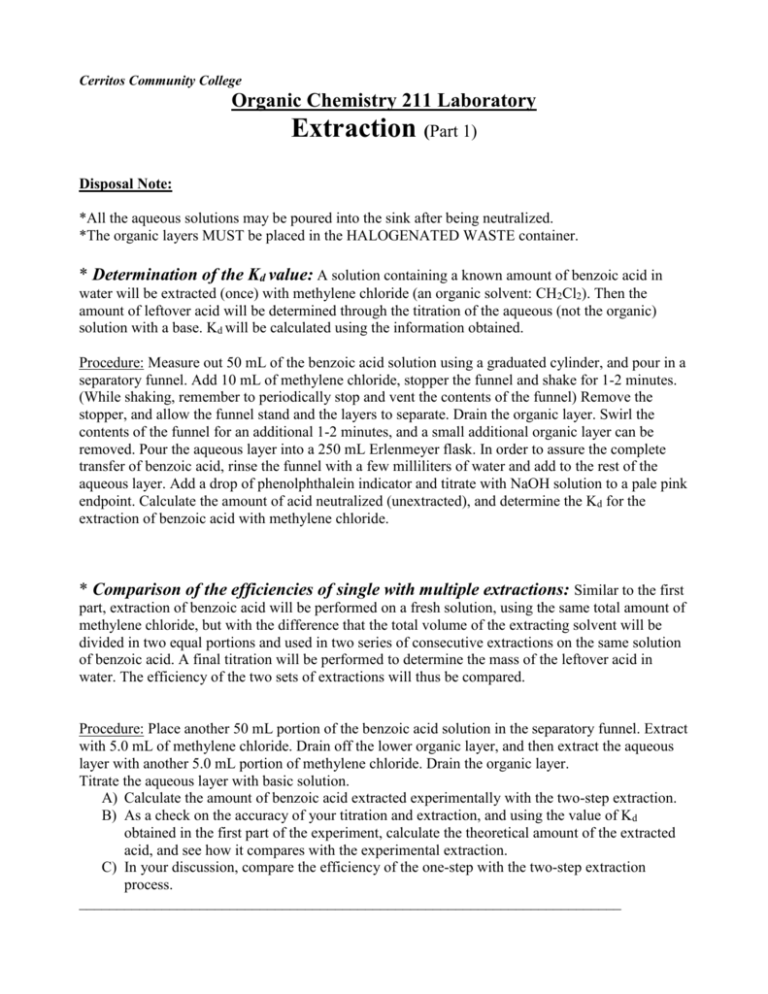
Cerritos Community College Organic Chemistry 211 Laboratory Extraction (Part 1) Disposal Note: *All the aqueous solutions may be poured into the sink after being neutralized. *The organic layers MUST be placed in the HALOGENATED WASTE container. * Determination of the Kd value: A solution containing a known amount of benzoic acid in water will be extracted (once) with methylene chloride (an organic solvent: CH2Cl2). Then the amount of leftover acid will be determined through the titration of the aqueous (not the organic) solution with a base. Kd will be calculated using the information obtained. Procedure: Measure out 50 mL of the benzoic acid solution using a graduated cylinder, and pour in a separatory funnel. Add 10 mL of methylene chloride, stopper the funnel and shake for 1-2 minutes. (While shaking, remember to periodically stop and vent the contents of the funnel) Remove the stopper, and allow the funnel stand and the layers to separate. Drain the organic layer. Swirl the contents of the funnel for an additional 1-2 minutes, and a small additional organic layer can be removed. Pour the aqueous layer into a 250 mL Erlenmeyer flask. In order to assure the complete transfer of benzoic acid, rinse the funnel with a few milliliters of water and add to the rest of the aqueous layer. Add a drop of phenolphthalein indicator and titrate with NaOH solution to a pale pink endpoint. Calculate the amount of acid neutralized (unextracted), and determine the Kd for the extraction of benzoic acid with methylene chloride. * Comparison of the efficiencies of single with multiple extractions: Similar to the first part, extraction of benzoic acid will be performed on a fresh solution, using the same total amount of methylene chloride, but with the difference that the total volume of the extracting solvent will be divided in two equal portions and used in two series of consecutive extractions on the same solution of benzoic acid. A final titration will be performed to determine the mass of the leftover acid in water. The efficiency of the two sets of extractions will thus be compared. Procedure: Place another 50 mL portion of the benzoic acid solution in the separatory funnel. Extract with 5.0 mL of methylene chloride. Drain off the lower organic layer, and then extract the aqueous layer with another 5.0 mL portion of methylene chloride. Drain the organic layer. Titrate the aqueous layer with basic solution. A) Calculate the amount of benzoic acid extracted experimentally with the two-step extraction. B) As a check on the accuracy of your titration and extraction, and using the value of Kd obtained in the first part of the experiment, calculate the theoretical amount of the extracted acid, and see how it compares with the experimental extraction. C) In your discussion, compare the efficiency of the one-step with the two-step extraction process. ________________________________________________________________________ Needed (per student): 1 Burette (check out)---------------------------- 15 per lab 1 Separatory funnel (check out)---------------- 15 per lab NaOH solution (ca. 30-50 mL) ---------------- ca. 450mL-750 mL per lab Benzoic acid solution (ca. 100 mL)------------ca. 1500 mL per lab Phenolphthalein solution (a few drops)-------- 1 dropper bottle Methylene chloride (ca. 20 mL)-----------------ca. 300 mL per lab Halogenated waste container----------------------------------------------


